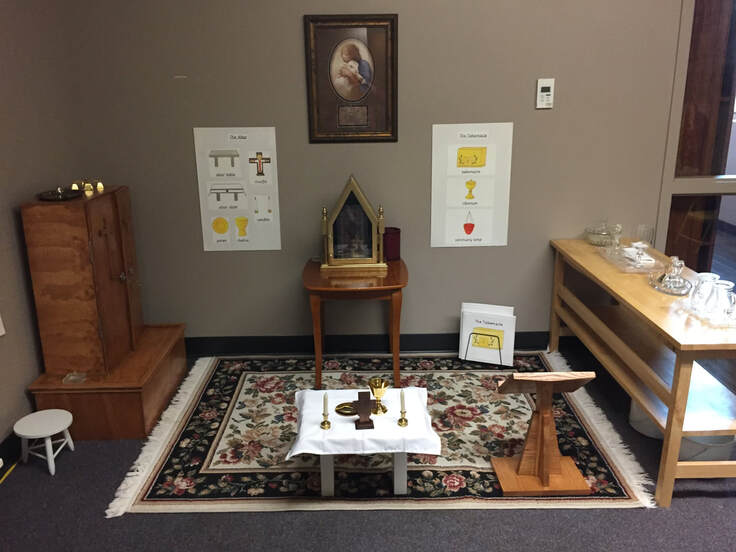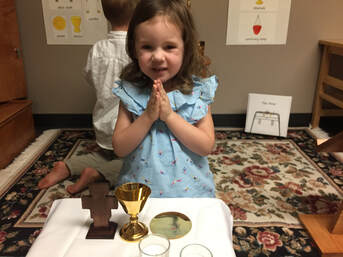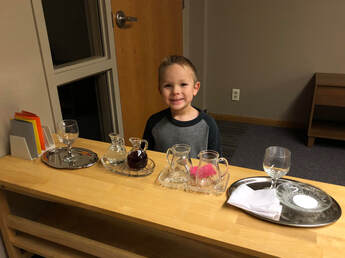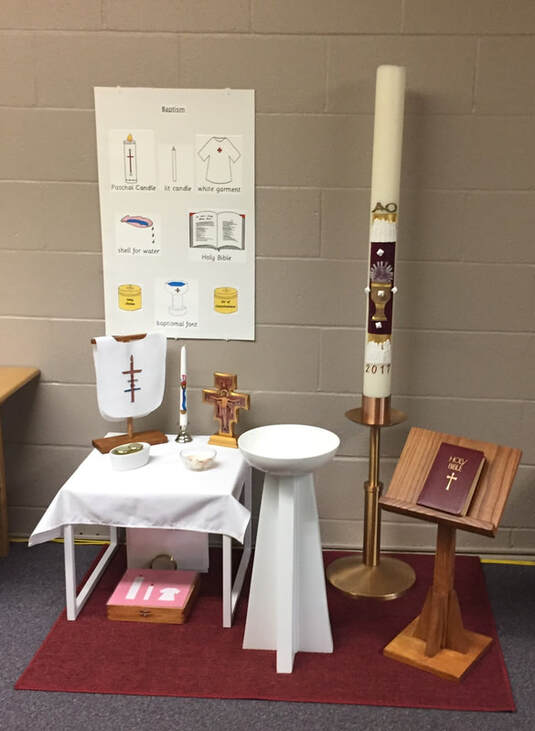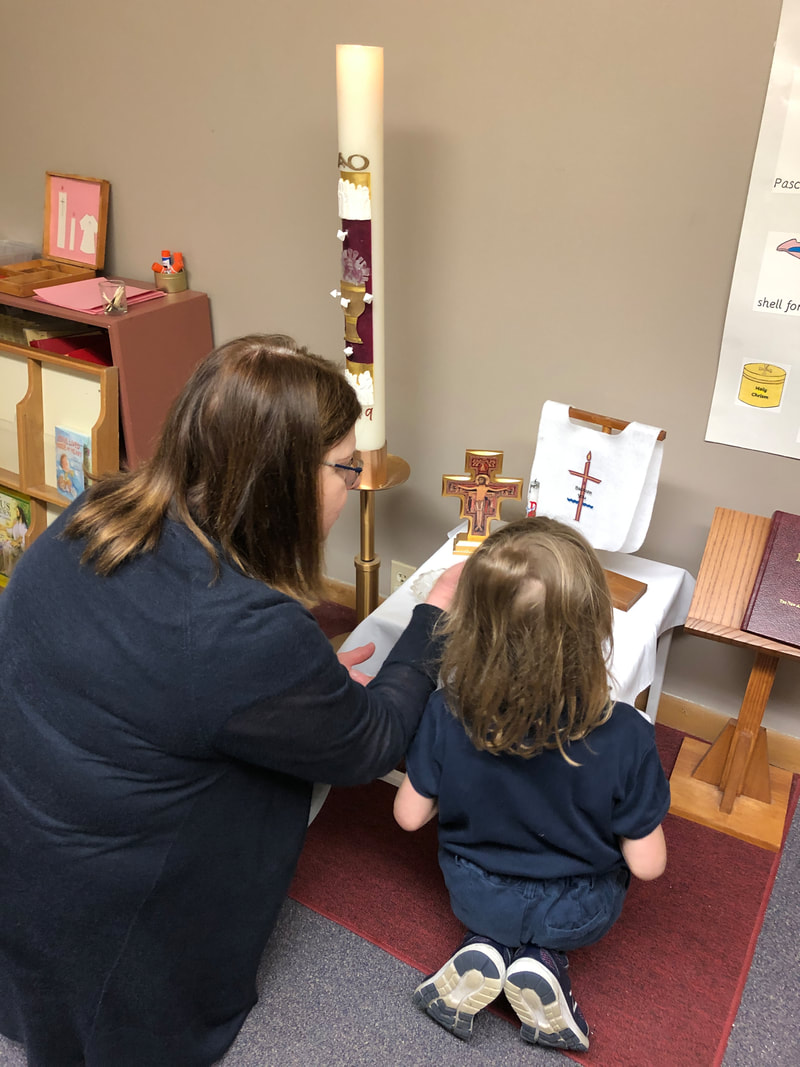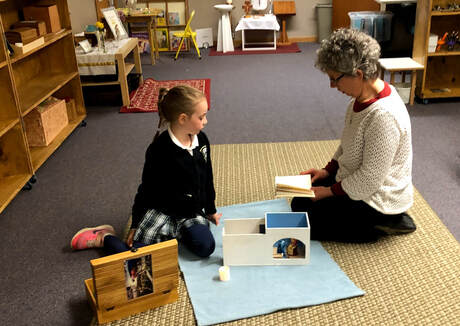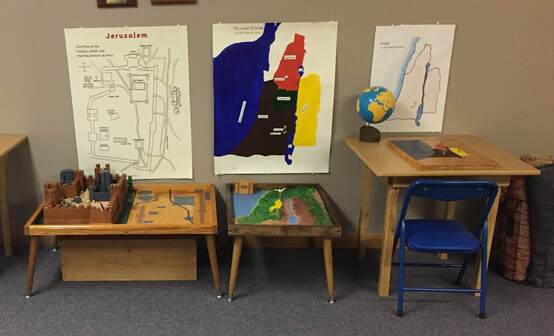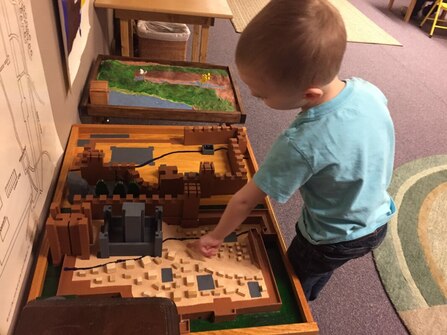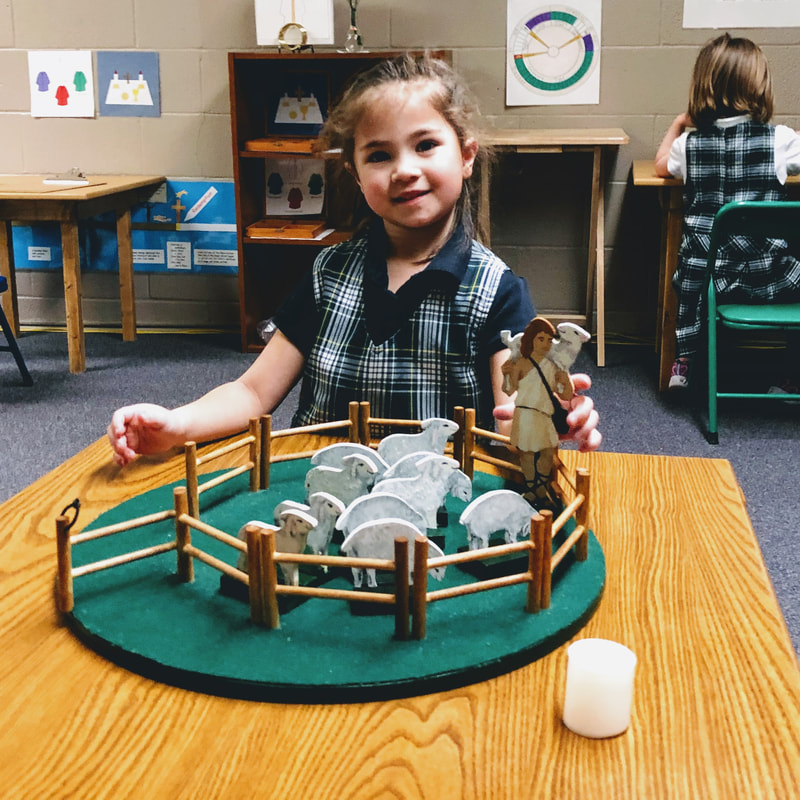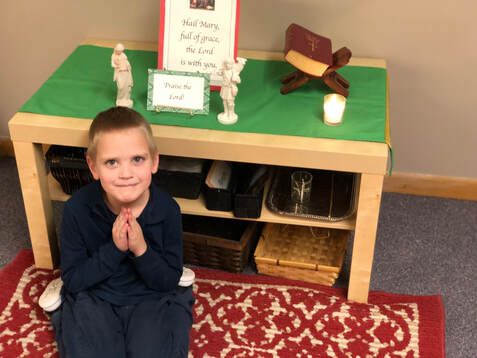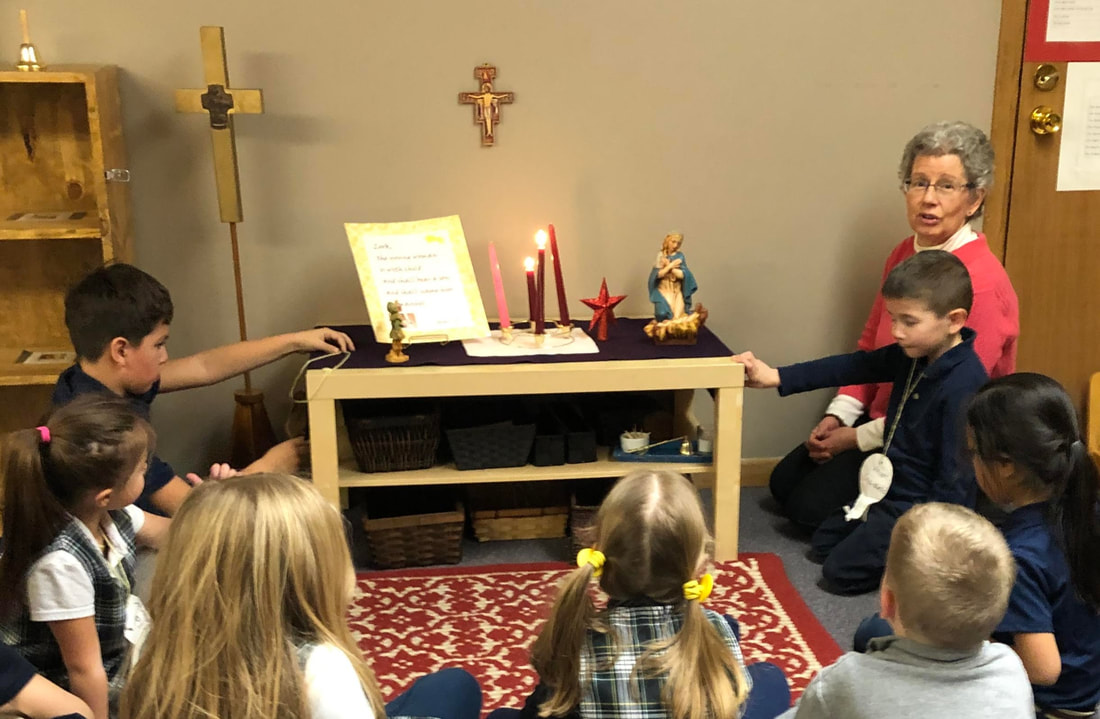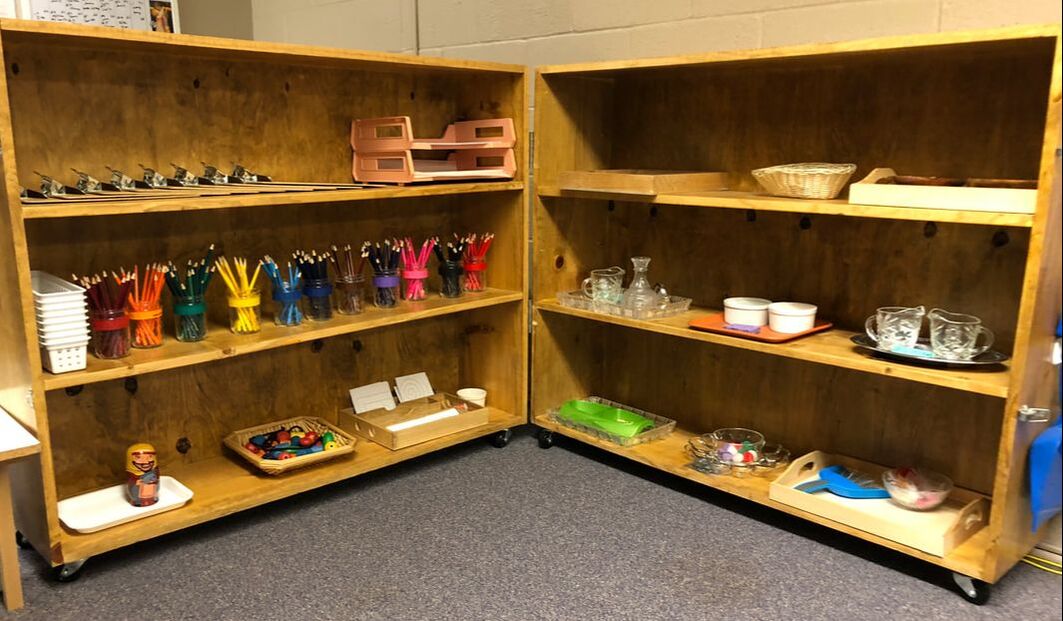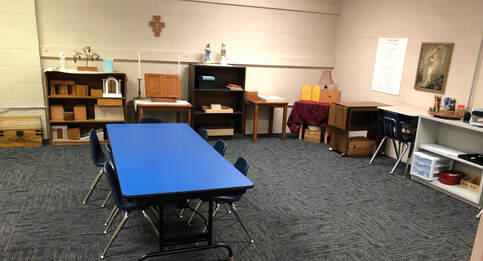The philosophy of Catechesis of the Good Shepherd (CGS) is that God is present in a child’s deepest being and that God and the child are already in a unique and loving relationship. To assist children in developing this relationship, a sacred environment called an Atrium is prepared. The word “atrium” actually means “portico, or porch entrance to a large house.” The Atrium was a term given to this space because in the ancient church, the Atrium was a gathering place where those preparing to enter the Church would receive instruction. The Atrium has a similar purpose for our children, as it is a place to help them enter into the life of God and the Church.
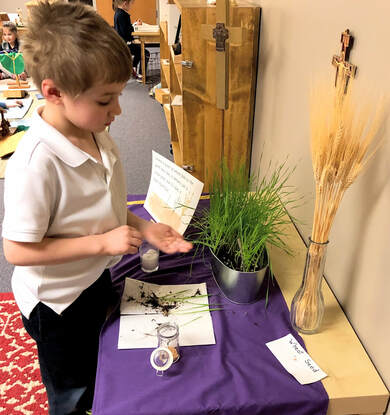
An Atrium is a quiet space which provides children with the time and means they need to listen to and fall in love with God. The Atrium contains many materials for hands on learning which are simple and beautiful such as dioramas, small figures of biblical people, and geography materials such as the map of Israel and the City of Jerusalem. Everything in the room is scriptural and liturgical. It is purposely structured not as a classroom, but a place in which the spiritual life can be lived.
CGS invites the adult to move out of the role of teacher and serve, instead, as a co-listener and co-learner with the child before the word of God. The adult functions in a role similar to that of a spiritual director, helping to foster the child’s spiritual journey. The adult creates a place and time for the child and God to meet and fall in love, but then backs away so that the two can encounter each other on their own terms.
CGS invites the adult to move out of the role of teacher and serve, instead, as a co-listener and co-learner with the child before the word of God. The adult functions in a role similar to that of a spiritual director, helping to foster the child’s spiritual journey. The adult creates a place and time for the child and God to meet and fall in love, but then backs away so that the two can encounter each other on their own terms.
The Level 1 Atrium Has Seven Main Areas:
The Altar Area - The children enjoy setting the child-sized altar, singing and praying in this area. They learn the names of the articles of the Mass including chalice, paten, tabernacle, ciborium and chasuble. The children learn more about the mystery of the Mass through the gestures of epiclesis and offering, the sign of peace and the preparation of the cruets and chalice.
This area is dedicated to the Sacrament of Baptism. The children learn the articles and gestures of Baptism. They celebrate that the light of Jesus has come to them through the Holy Spirit and the waters of Baptism to make them the children of God.
The Infancy Narratives Area has dioramas depicting key events in the life of Jesus. These works begin with the Annunciation, the Visitation and move to the Birth of Jesus and the Adoration of the Shepherd and Magi, the Presentation in the Temple and the Flight into Egypt.
The Geography Area includes maps of Israel to show that Jesus was a real person in a real place on earth. This helps make the mystery of God concrete.
Parable materials help the children learn about the Kingdom of God. They include the Good Shepherd, the Found Sheep, the Mustard Seed, the Precious Pearl, the Hidden Treasure and the Growing Seed.
The Prayer Table is our favorite area! The children love to set up the prayer table and pray quietly. The color of the table cloth reflects the liturgical season. At the end of our sessions, the children gather around the table to sing and thank God for his gifts.
The Practical Life Area generally revolves around care of self, care of environment, grace and courtesy and movement of objects. These real life experiences help the child have a sense of belonging and accomplishment.
